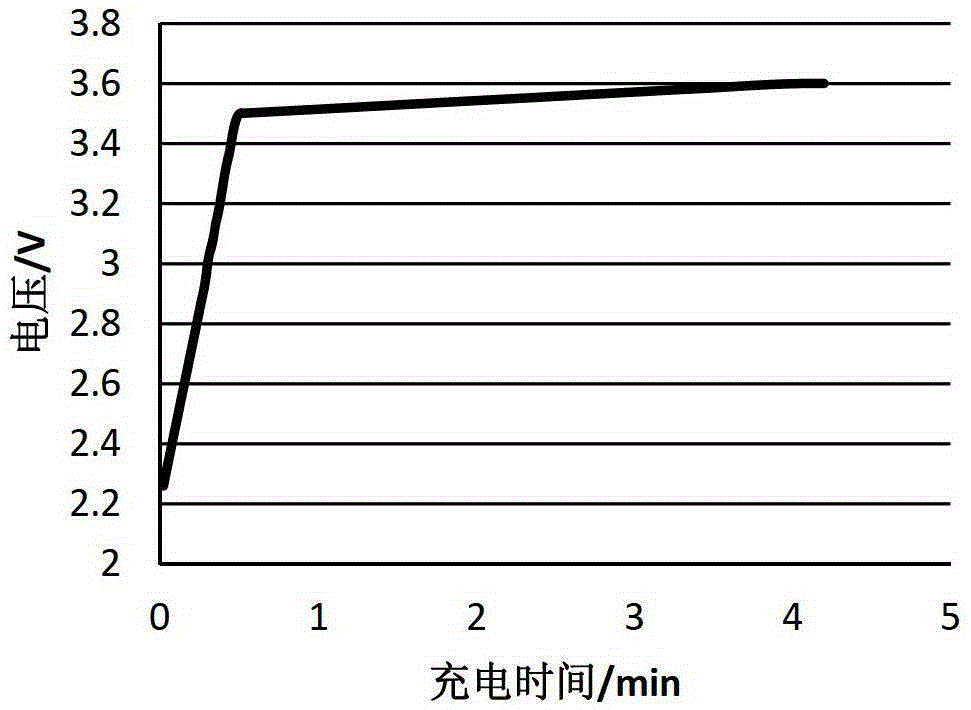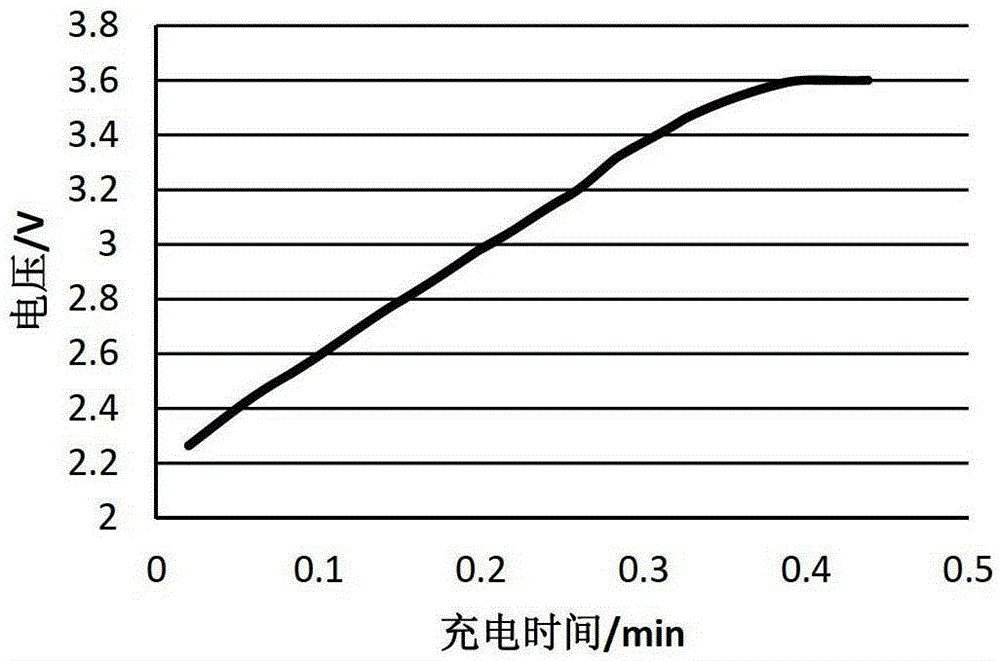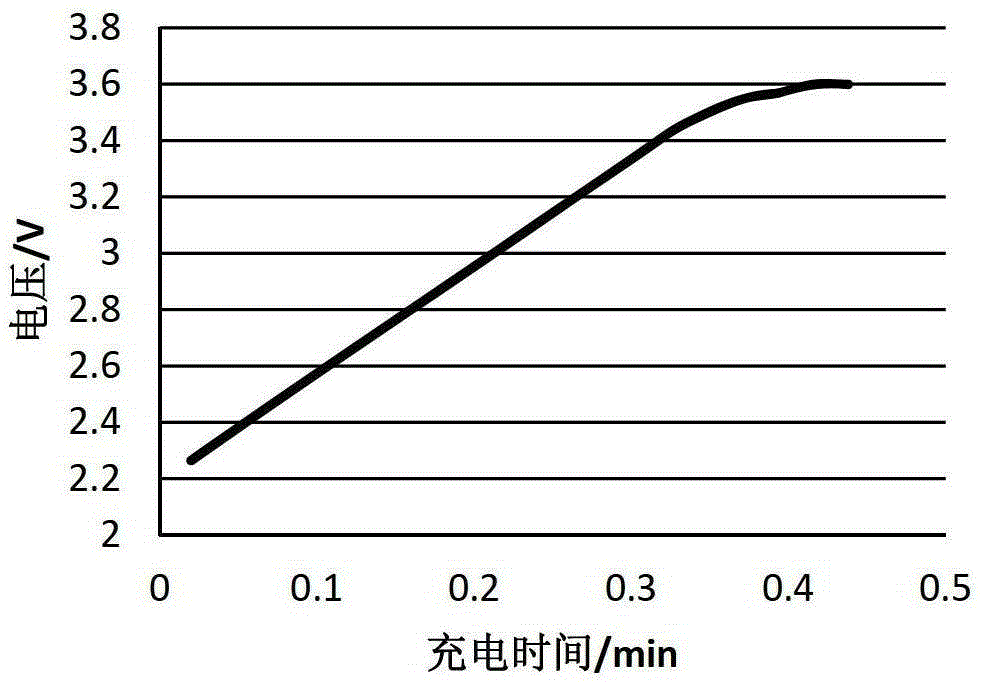A kind of lithium ion battery negative electrode slurry, negative electrode and battery
A lithium-ion battery and negative electrode slurry technology, applied in battery electrodes, non-aqueous electrolyte battery electrodes, secondary batteries, etc., can solve problems such as uneven pore distribution, low porosity, poor battery rate and low temperature performance
- Summary
- Abstract
- Description
- Claims
- Application Information
AI Technical Summary
Problems solved by technology
Method used
Image
Examples
preparation example Construction
[0031] The preparation of the negative electrode may also include other steps, for example, after-treatment of the cut piece, which is well known to those skilled in the art. After heat treatment, it is cut according to the size of the negative electrode required by the prepared battery to obtain the negative electrode sheet.
[0032] Preferably, the thickness of the negative electrode sheet prepared by the present invention is 90~150um, and the compacted density is 1.20~1.45g / cm 3 .
[0033] The present invention also provides a lithium-ion battery, comprising a battery case and an electrode group and an electrolyte sealed in the battery case; the electrode group includes a positive pole, a negative pole, and a diaphragm between the positive pole and the negative pole, wherein, The negative electrode is the above-mentioned negative electrode of the lithium ion battery.
[0034] The present invention has no special requirements for the preparation method of the lithium-ion ba...
Embodiment 1
[0047] This embodiment is used to illustrate the negative electrode slurry, lithium ion battery negative electrode and lithium ion battery of the present invention.
[0048] (1) Preparation of negative electrode slurry for lithium-ion batteries
[0049] Get 100 parts by weight of graphite, 130 parts by weight of deionized water, 2 parts by weight of carbon black, 2 parts by weight of carboxymethyl cellulose (CMC), 4 parts by weight of styrene-butadiene rubber (SBR), pore-forming agent azodicarbonamide ( Particle size 0.5~2.5um, decomposition temperature 110°C, residual ash content after decomposition not higher than 0.2%) 3 parts by weight.
[0050] Stir CMC and deionized water for 3 hours under the condition that the vacuum degree is less than -0.08MPa to obtain the CMC aqueous solution, then add carbon black, SBR, graphite, and pore-forming agent to the CMC aqueous solution, and then the vacuum degree is less than -0.08MPa. The mixture was fully stirred for 7 hours to obtai...
Embodiment 2
[0058] Negative electrode slurry, negative electrode, positive electrode and lithium ion battery were prepared according to the method of Example 1, the difference was that the amount of pore-forming agent in step (1) was 2 parts by weight, and the negative electrode slurry was prepared with a thickness of 120um, compacted The density is 1.32g / cm 3 , a negative electrode sheet with a porosity of 38.95%, and finally sliced to obtain a negative electrode sheet sample S2 of a lithium-ion battery with length×width×thickness=491mm×43.5mm×120μm. The rest of the steps are the same, and the 053450 lithium ion battery S22 is obtained.
PUM
| Property | Measurement | Unit |
|---|---|---|
| decomposition temperature | aaaaa | aaaaa |
| density | aaaaa | aaaaa |
| density | aaaaa | aaaaa |
Abstract
Description
Claims
Application Information
 Login to View More
Login to View More - R&D
- Intellectual Property
- Life Sciences
- Materials
- Tech Scout
- Unparalleled Data Quality
- Higher Quality Content
- 60% Fewer Hallucinations
Browse by: Latest US Patents, China's latest patents, Technical Efficacy Thesaurus, Application Domain, Technology Topic, Popular Technical Reports.
© 2025 PatSnap. All rights reserved.Legal|Privacy policy|Modern Slavery Act Transparency Statement|Sitemap|About US| Contact US: help@patsnap.com



